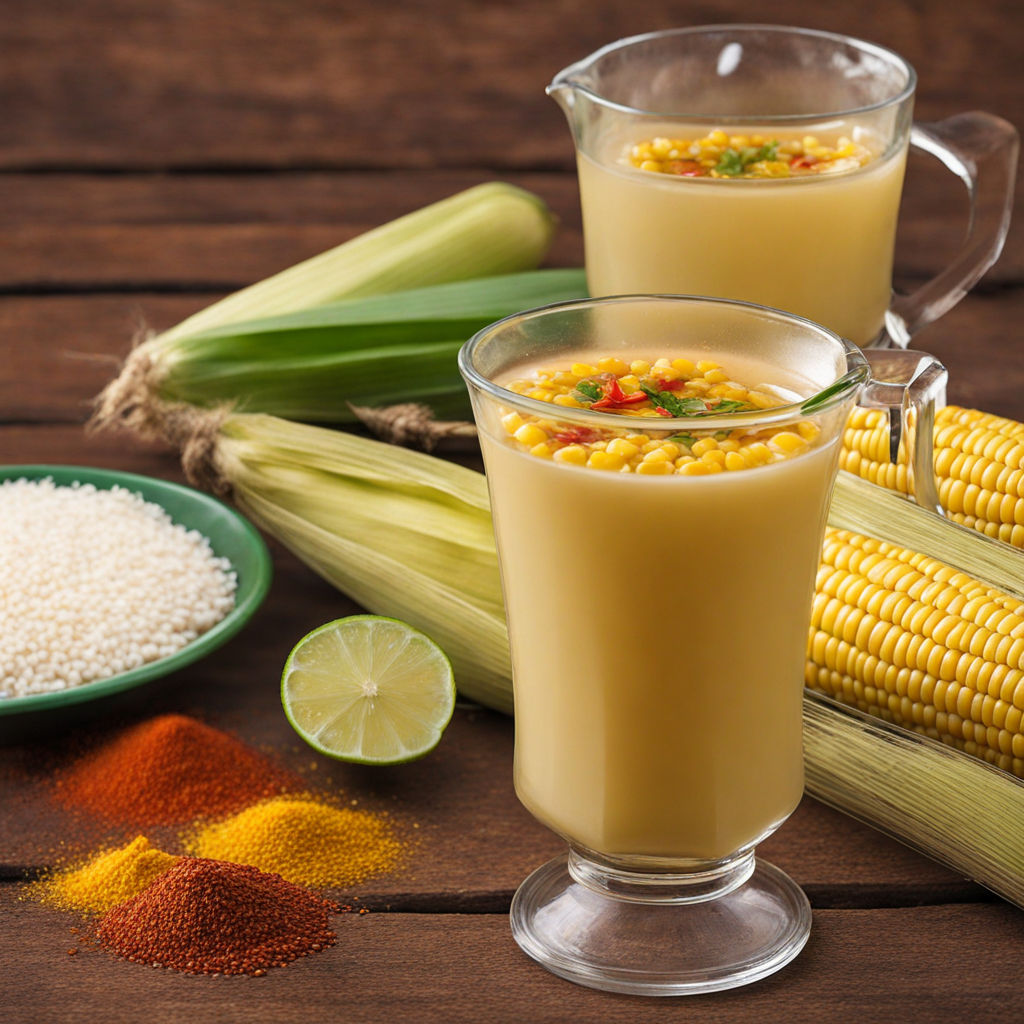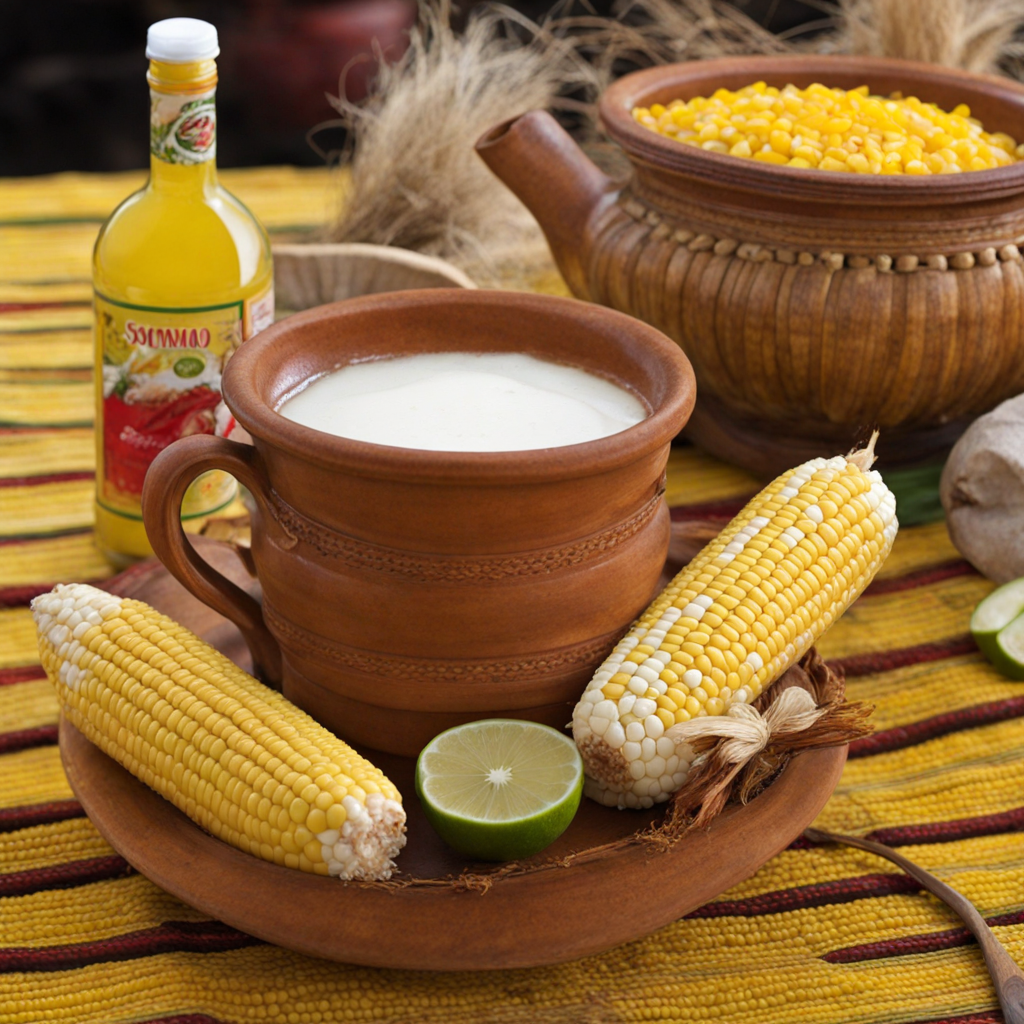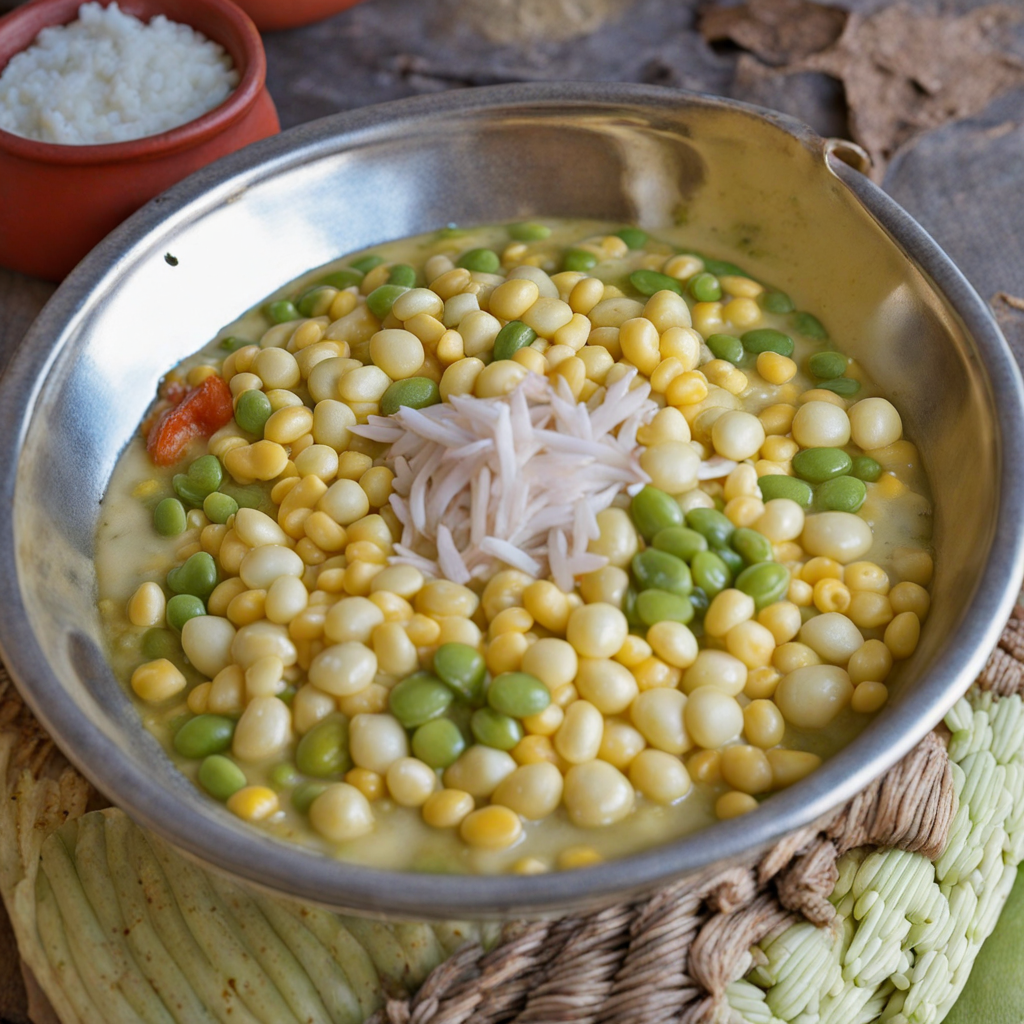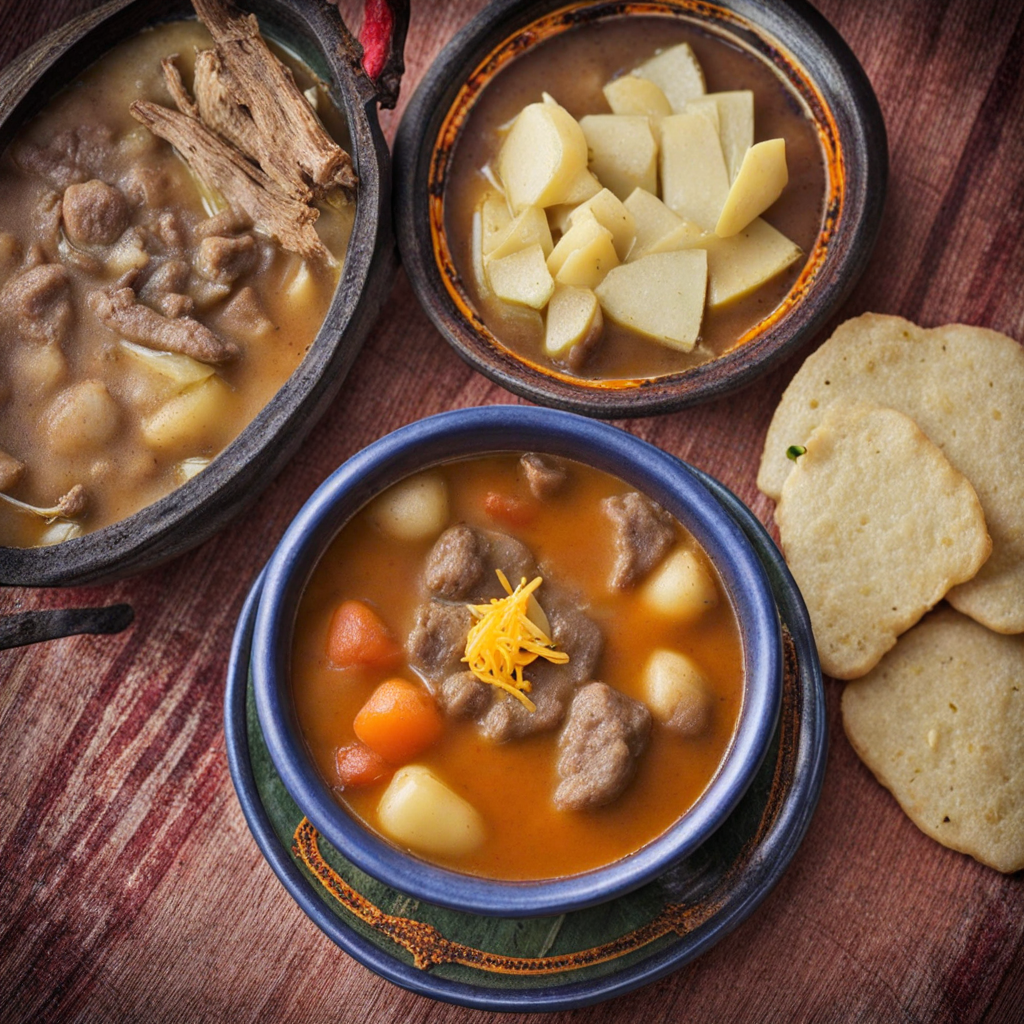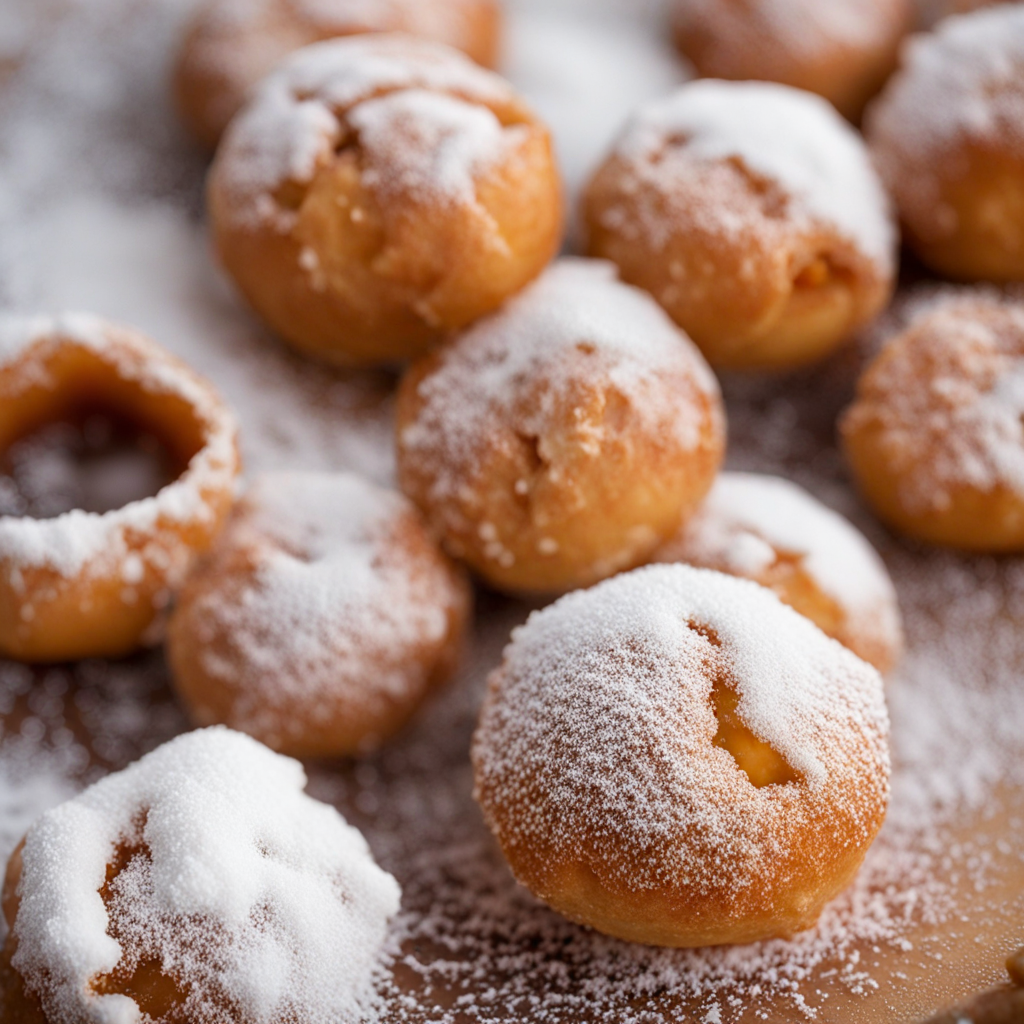Somó
Somó is a traditional Bolivian dish that embodies the rich culinary heritage of the Andes. This flavorful dish is made using a base of corn, which is a staple ingredient in Bolivian cuisine. The corn is typically ground into a fine flour and then mixed with water and a variety of spices, creating a thick dough-like consistency. From this base, the dish can be enhanced with an array of ingredients, such as cheese, meats, or vegetables, providing a delightful burst of flavors and textures. What sets Somó apart is its unique cooking method, often prepared in a traditional clay oven, which infuses the dish with a smoky aroma and a slightly crispy exterior. When baked to perfection, the inside remains soft and moist, while the outside takes on a beautiful golden hue. The addition of local spices like ají and herbs elevates the taste, making each bite a delightful experience that reflects the essence of Bolivian culture. Somó is not just a dish; it's a reflection of the communal spirit found in Bolivia, often served during family gatherings, festivals, and celebrations. Enjoyed warm, it can be paired with a variety of sides such as fresh salads or salsas, enhancing its flavor profile. This dish invites food lovers to embrace the vibrant tastes of Bolivia and discover the comforting and authentic experience of traditional Andean cuisine.
How It Became This Dish
## The Culinary Journey of Somó: Bolivia’s Traditional Delight Origins and Traditional Ingredients Somó is a traditional Bolivian dish that embodies the country’s rich culinary tapestry, heavily influenced by indigenous practices, Spanish colonization, and the diverse ecological regions of Bolivia. This dish primarily hails from the Andean regions, where the high-altitude environment has shaped both the agricultural practices and the diets of the people. At its core, Somó is a corn-based dish. The primary ingredient is maíz chulpe, a type of corn that is native to the Andes. This corn is unique because of its ability to thrive at high altitudes, making it a staple food for numerous Andean communities. The corn is typically dried and then ground into flour, which is the base for the dish. Another key ingredient is potatoes, a vegetable that has been cultivated in the Andes for thousands of years and is a cornerstone of Bolivian cuisine. In many variations of Somó, the dish is enriched with cheese, often made from local dairy, and sometimes incorporates meat, such as chicken or beef. The combination of these ingredients creates a hearty meal that is not only filling but also nutritious, reflecting the agricultural bounty of the region. Cultural Significance Somó is more than just a dish; it is a symbol of Bolivian culture and identity. It is often served during family gatherings, community celebrations, and traditional festivals. Its preparation and consumption are steeped in ritual, often associated with agricultural cycles and harvest festivals. For example, during the Inti Raymi, the Festival of the Sun celebrated by the Aymara and Quechua peoples, Somó may be prepared as an offering to the Pachamama (Mother Earth) to give thanks for the harvest. The dish also plays a role in the daily lives of Bolivians, as it represents the fusion of indigenous ingredients and culinary techniques with influences brought by Spanish colonizers. This melding of cultures is a hallmark of Bolivian cuisine, where traditional practices coexist with modern influences, creating a dynamic food landscape. Development Over Time Historically, the preparation of Somó has evolved. In pre-Columbian times, indigenous peoples prepared similar corn-based dishes, often using local spices and herbs. After the arrival of the Spanish in the 16th century, new ingredients such as cheese and various meats were introduced, leading to the evolution of Somó into the version we recognize today. During the colonial period, as the Spanish established their presence in Bolivia, they brought with them their culinary practices and ingredients. This period marked the beginning of a significant transformation in Bolivian cuisine. The introduction of dairy farming led to the production of cheese and other dairy products, which became integral to many traditional dishes, including Somó. In the 19th and early 20th centuries, as Bolivia began to define its national identity post-independence, there was a renewed interest in indigenous foods and culinary practices. This period saw a revival of traditional dishes, with Somó being celebrated as a symbol of national pride. As Bolivia embraced its rich heritage, Somó became emblematic of indigenous resilience and the enduring connection between people and their land. Regional Variations and Modern Interpretations As with many traditional dishes, Somó has regional variations that reflect local ingredients and tastes. In the highlands, it might be prepared with more robust flavors, incorporating local herbs and spices. In contrast, in lowland areas, it may take on a sweeter profile, with the addition of fruits or sweeteners like honey. Modern interpretations of Somó are also emerging as chefs and home cooks experiment with traditional recipes. Some have begun to incorporate gluten-free grains or to replace the traditional meats with vegetarian options, catering to contemporary dietary preferences while still honoring the dish’s roots. In urban centers like La Paz, Somó has found its way into the menus of restaurants that aim to showcase Bolivian cuisine to an international audience. Here, it is often presented with a contemporary twist, such as deconstructed versions or served alongside gourmet sauces, appealing to a new generation of food enthusiasts while maintaining its traditional essence. Somó in a Global Context As globalization continues to influence culinary practices around the world, Somó has started to gain recognition beyond Bolivia. The growing interest in authentic ethnic cuisines has led to an appreciation for traditional dishes like Somó, which encapsulate the flavors and history of a place. Food festivals, cultural exchanges, and social media platforms have provided avenues for sharing Bolivian culinary heritage with a broader audience. This global interest has also sparked conversations about the importance of preserving traditional foodways in the face of modern challenges, such as climate change and urbanization. As Bolivian communities work to maintain their culinary traditions, Somó serves as a reminder of the resilience of indigenous food systems and the importance of cultural heritage. Conclusion Somó is not merely a dish; it is a narrative of Bolivia’s history, culture, and identity. Rooted in ancient agricultural practices and enriched by colonial influences, it reflects the diverse tapestry of Bolivian life. As the dish continues to evolve and adapt to modern tastes, it retains its significance as a symbol of community, celebration, and resilience. In every bite of Somó, one can taste the essence of the Andean landscape, the labor of generations of farmers, and the spirit of a culture that honors its past while looking toward the future. Whether enjoyed in a rural household or a bustling urban restaurant, Somó remains a beloved emblem of Bolivian heritage, inviting everyone to partake in its delicious legacy.
You may like
Discover local flavors from Bolivia


